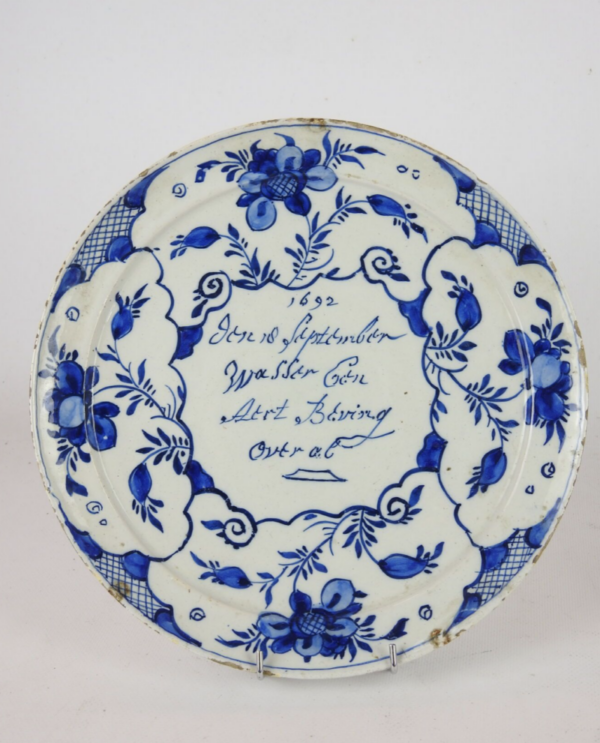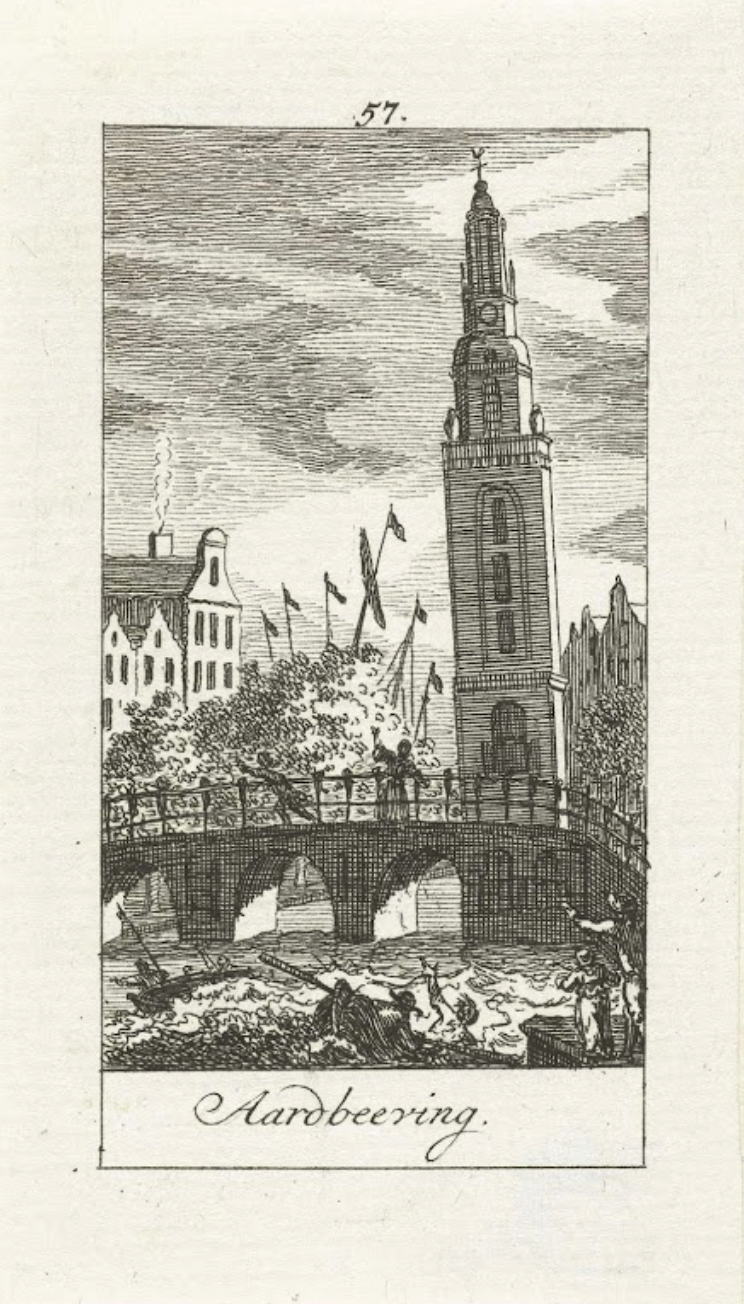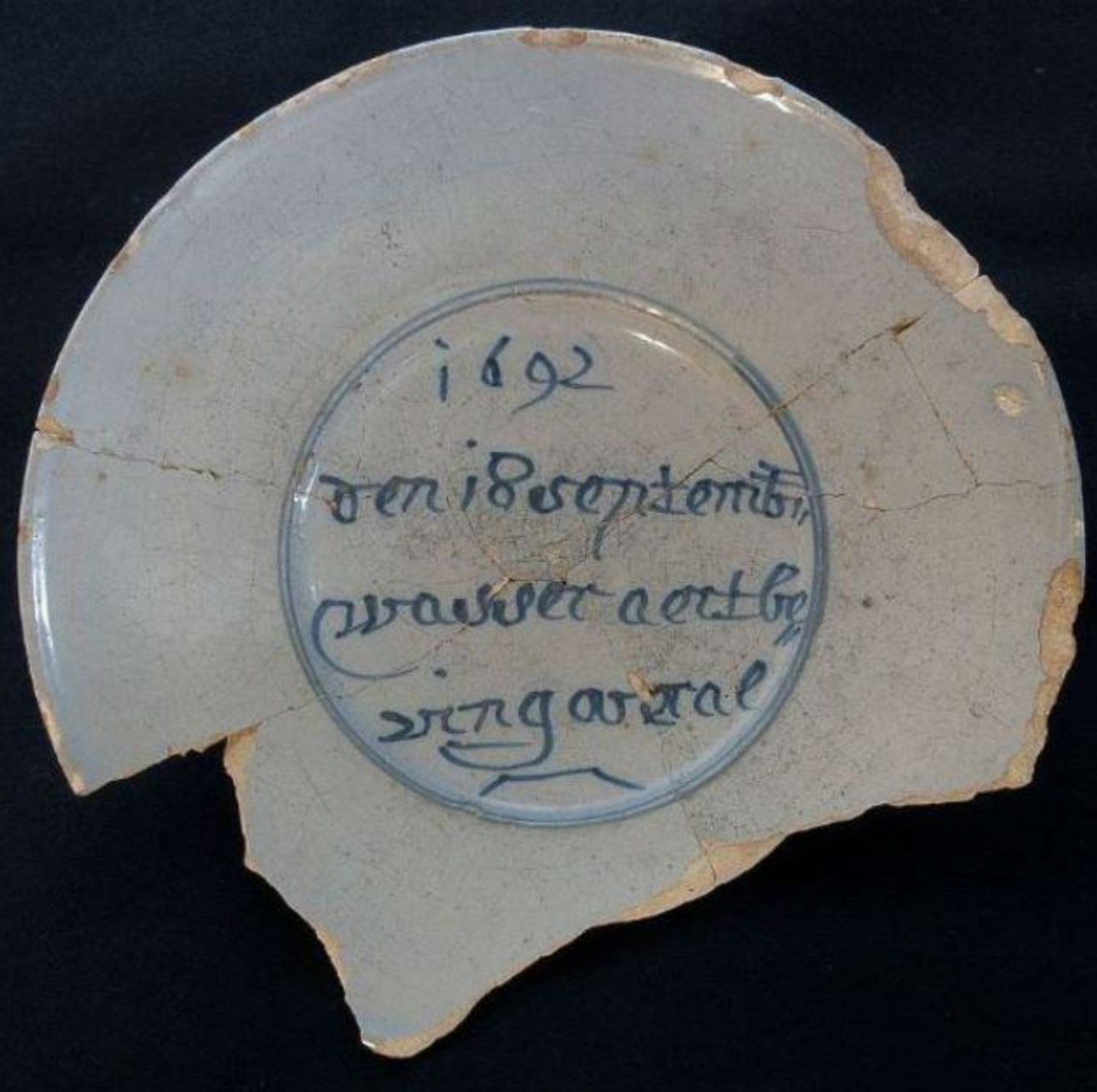
Delft and Disaster
Natural disasters have wreaked havoc on civilizations throughout time. The effects of devastating earthquakes in Turkey and Syria are still felt today. On a smaller scale, a recent earthquakes in the Dutch province of Groningen was very impactful for the people involved. Although rare, several earthquakes were reported in Western Europe in the seventeenth century. The experience must have made a deep impression, because on some occasions the natural phenomenon was commemorated on Delftware. In this article we take you back to the year 1692.
In 1692, Constantijn Huygens Jr, secretary to King-Stadholder William III, reported an earthquake in his diary while he was out on a military campaign in the Southern Netherlands. He wrote that on September 18, around half past two in the afternoon, he was sitting at a table waiting for his dessert. Suddenly the table started to shake back and forth. At first Constantijn thought it might be a horse that tripped over the ropes of the tent they stayed in. But observing his glass, from which the wine spilled due to the shaking, he realized it must be an earthquake. According to his diary, others around him noticed as well: “suddenly everybody started to shout ‘an earthquake, an earthquake'”. People left the tent and started towards the King’s house. An official alarm for the king was given by drum, while people shouted ‘Save the King!!’ During the chaos, the King tried to get out, but fell and suffered a minor injury to his leg.
Constantijn’s brother, Christiaan, who is considered one of the leading scientists of the seventeenth century, also reported the earthquake from his estate Hofwijck in Voorburg, near Delft. He reported: “While I was reading a book, I suddenly and not without fear, felt an earthquake. The house shook distinctly, rocking back and forth, so that paintings hanging in the dining room were smashed against the gilded leather covering the walls. The stone floor I was standing on lifted slightly, then collapsed again, several times for about 10 or 12 seconds. The moat around the house, 60 feet [±18 meters] wide, moved to the sides with some broad waves. Servants in the kitchen, which is below the dining room, had sensed the same movement, and had rushed to me in fear.
There was no wind. For some time I was under the impression that the arsenal of Dunkirk had been completely destroyed by gunpowder, as it was daily expected that that city would be besieged by our army, and set afire with flares and artillery. (1) But from such a great distance such great pressure could scarcely have been given to the air, and not a sound or blow had been heard. Two days later we understood that nothing had been done in Dunkirk, and that it had really been an earthquake. And this also frightened everyone in Amsterdam and Antwerp. To an Amsterdam observer it seemed as if waves were moving from North to South and that everything was wavering. It is said that towers in particular swayed in an astonishing manner, and that in some the bells began to ring of their own accord. My caretaker, preoccupied with garden work, had felt nothing; I think because he was moving himself.
The same movement has occurred everywhere, in the Dutch province of Zeeland, in Flanders in the fortresses of King William, Liège, Cologne, Paris, London and in Scotland. In Hamburg he seems not to have been sighted. In Liege it was more intense, not without some damage. The time there was a quarter past two, so earlier than here.”
Christiaan must have known about King William’s experience with the earthquake through correspondence with his brother. The Huygens brothers’ diaries give us a firsthand account of what it was like to experience the earthquake.
The epicenter of the earthquake was around Veviers, now the Belgian Ardenne, however the total affected area was 2.600 square miles, more than 6.700 square kilometers. Several contemporary newspapers confirmed the Huygens brothers’ reports. The London Gazette of late September stated that the earthquake was even felt in London, Normandy and Paris. The ‘Amsterdamsche courant’ of September 20 mentioned earthquake damage in Amsterdam, The Hague and Antwerp. In Amsterdam (and probably elsewhere) the tower bells started to ring, due to the movement of the earth.

The earthquake had a magnitude of 6 to 6.5 on the Richter scale and lasted approximately two minutes. In that short amount of time it caused considerable material damage, but miraculously, no reported deaths. In some chronicles, injuries are mentioned and people who, literally or metaphorically, had a heart attack: “veele menschen waeren bevanghen met eene bedwelminge aen het herte” or freely translated: many people suffered heart failure. (2)
The panic was widespread, as disasters were seen as a punishment from God. Nevertheless, memorial objects and texts were created to commemorate the event, and perhaps celebrate that the earthquake was not more destructive. The 1692 earthquake was commemorated by a special coin, poetry and graphic art, as seen in the etching with a view of the leaning Roodenpoortstoren in Amsterdam, by Simon Fokke. Remarkably, the etching was made long after the event itself, between 1779 and 1881. (3)
Delftware was also made as a commemorative object for this natural disaster. One example is a plate with blue and white decoration around the rim and in the center the text “1692 den 18 september wasser Aert Beving overal”. A similar type exists in a smaller size as well, but no others are known. Like the etching, the plates are possibly from a later date.
In 2013, an excavation of a moat around a seventeenth century Presbyterian monastery in Breda uncovered various fragments of a commemorative plate for the 1692 earthquake. Five other similar plates were found during earlier excavations near Breda. The text, however, differs slightly. One example reads: “1692 den 18 september wasser aert beving overal”, while the other variant bears the text “1692 den 18 september wasser een aerdbeving”. These fragments are earlier than the variant with decorated rim.
Unfortunately, the origin of the plates is unknown, and no other examples of the plates have been found. However, the diaries of the Huygens brothers, newspaper accounts, and the discovery of these plate fragments give a fascinating glimpse into Dutch history.

Front image: Plate from a private collection, dated 1692, however possibly of a later date and serving as a commemoration of the earthquake.
(1) In 1692 the Dutch started a military campaign together with the English, to conquer Dunkirk from the French in order to stop the threat for the Dutch merchant fleet. However, without success.
(2) https://www.dbnl.org/tekst/_bie001198301_01/_bie001198301_01_0117.php
(3) https://www.rijksmuseum.nl/nl/collectie/RP-P-OB-82.820
(4) https://erfgoed.breda.nl/nieuws/herinnering-aan-een-aardbeving



